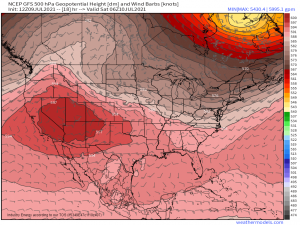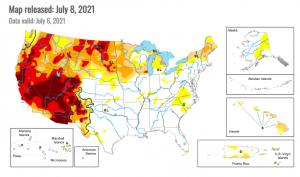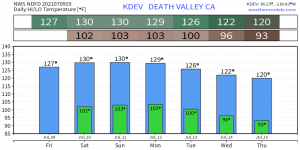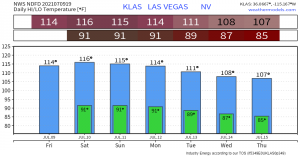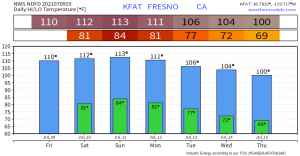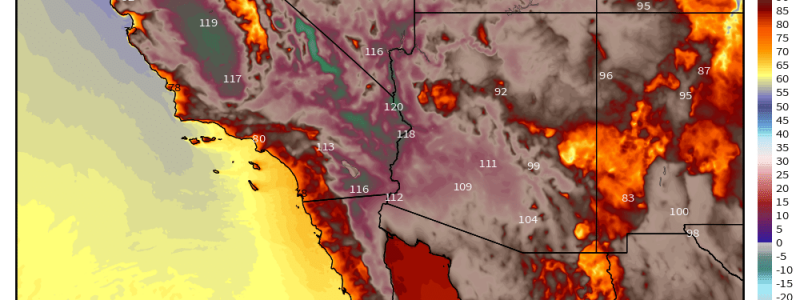
Brutal Heat Targets the Drought-Stricken Southwest
For the third time in the past month or so, heat is building out west and a heatwave bearing the potential for extreme temperatures is taking shape. While the Pacific Northwest will still be warmer than average, the focus of this heat wave will be on the desert Southwest/Southern California.
Modeling shows 500 mb heights approaching that magic number (600 dam) that we’ve mentioned during both of the previous heatwaves. It’s the number indicative of very hot air rising into the mid-levels.
Once again, an anomalous ridge aided by extreme drought conditions will produce potentially record breaking temperatures – including temperatures that will threaten the all-time world recorded high temperature.
If you’ll recall, when an area is dry, the sun’s energy has no water to evaporate. The energy reserved for evaporation then goes into heating the earth and the air. That’s the simple version, anyway.
The worst of the drought is directly under where the highest heights are modeled. So, as I said, heat plus extremely dry conditions is going to lead to a very serious heat wave.
How hot, exactly? Hot enough to threaten the world record for highest temperature every reliably recorded. “Reliably” is the key word there. For a long time, the record was assumed to be a reading taken at Furnace Creek in Death Valley – 134.1 degrees F on July 10, 1913. Recently, however, the accuracy of that reading has been called into question based on the equipment used to measure it and known errors.
The controversy surrounding the validity of this reading gives us a different record, reliably recorded, of 129.9 degrees F measured at Furnace Creek on August 16, 2020. This reading was taken by an automated weather station at the Furnace Creek Visitor Center.
The forecast high for tomorrow is officially 130 degrees F, which would break the record set just last year if it verifies. And it may. It is possible, however, that smoke from ongoing wildfires out west may fill the sky at higher levels, cutting down on the amount of radiation reaching the surface and, perhaps, leaving that record just out of reach. Still, that scenario isn’t a certainty, merely a possibility. Should the skies remain clear of smoke and cloud cover, a new record may be set.
Other places under the “heat dome” are looking at breaking their all-time highs as well.
Las Vegas is one. Their all-time high is 117 degrees F which they have reached a few times – in 1942, 2005, 2013, and 2017.
While the forecast high is “only” 116 degrees, 2 extra degrees to a record isn’t that far of a stretch. It’s one to watch, at least.
Fresno, California is also forecast within a few degrees of its all-time high.
Sunday’s forecast high of 113 degrees F would be a mere 2 degrees short of the record set July 8, 1905 – 115 degrees F. This also may be one to watch.
Regardless of whether or not all time highs are set, this will be a very dangerous heat. Take a look at the nighttime lows for each of those cities: both Las Vegas and Fresno remain well above 80 degrees at night. These sweltering lows afford no relief from the daytime heat. The body is unable to cool down without the aid of indoor climate control and reset to deal with the next day. In conditions like these, heat exhaustion and heat stroke set in easily. The heat will be especially brutal in the southern California valleys – a place where more than a few people have no form of climate control installed in their homes.
This is a time to check up on your neighbors and family/friends, especially those who are most vulnerable (elderly, sick, young children). Make sure they are drinking and staying as cool as possible. Get them to a cooling center if need be. They may not be able to tend to their needs as well as a healthy adult can. Also, some are able to tolerate the heat better than others. Far too many people perished during the recent heatwave in the Pacific Northwest. Let’s do our best to reduce those numbers during this event.
